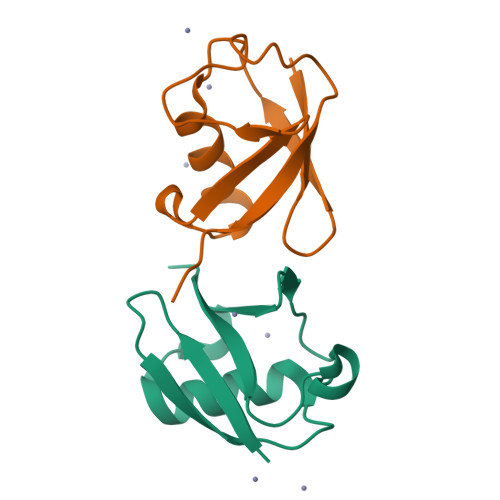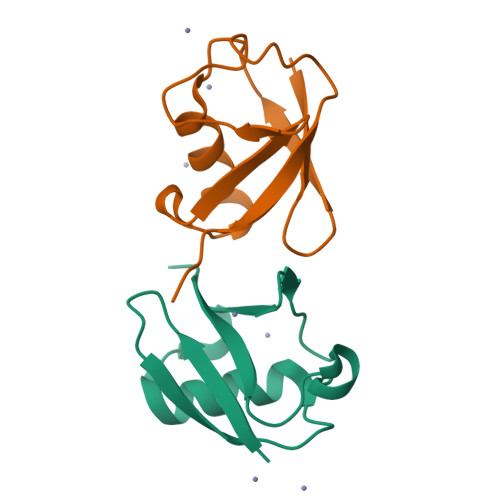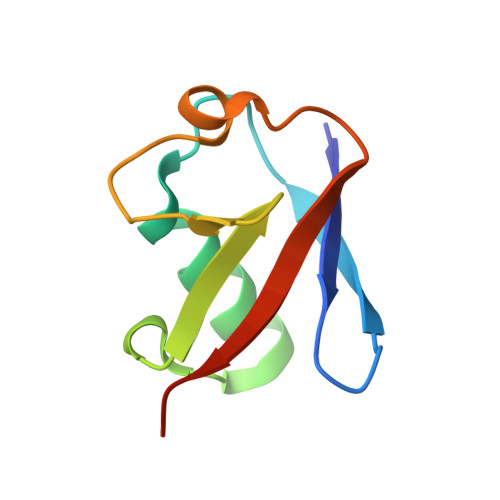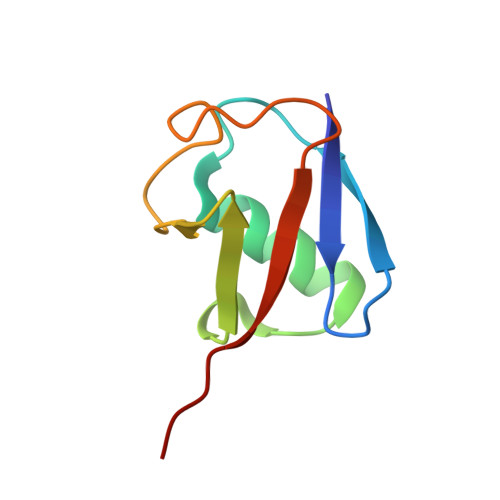Engineered Diubiquitin Synthesis Reveals K29-Isopeptide Specificity of an Otu Deubiquitinase
Virdee, S., Ye, Y., Nguyen, D.P., Komander, D., Chin, J.W.(2010) Nat Chem Biol 6: 750
- PubMed: 20802491
- DOI: https://doi.org/10.1038/nchembio.426
- Primary Citation of Related Structures:
2XK5 - PubMed Abstract:
Ubiquitination is a reversible post-translational modification that regulates a myriad of eukaryotic functions. Our ability to study the effects of ubiquitination is often limited by the inaccessibility of homogeneously ubiquitinated proteins. In particular, elucidating the roles of the so-called 'atypical' ubiquitin chains (chains other than Lys48- or Lys63-linked ubiquitin), which account for a large fraction of ubiquitin polymers, is challenging because the enzymes for their biosynthesis are unknown. Here we combine genetic code expansion, intein chemistry and chemoselective ligations to synthesize 'atypical' ubiquitin chains. We solve the crystal structure of Lys6-linked diubiquitin, which is distinct from that of structurally characterized ubiquitin chains, providing a molecular basis for the different biological functions this linkage may regulate. Moreover, we profile a panel containing 10% of the known human deubiquitinases on Lys6- and Lys29-linked ubiquitin and discover that TRABID cleaves the Lys29 linkage 40-fold more efficiently than the Lys63 linkage.
Organizational Affiliation:
Medical Research Council Laboratory of Molecular Biology, Cambridge, England, United Kingdom.


















